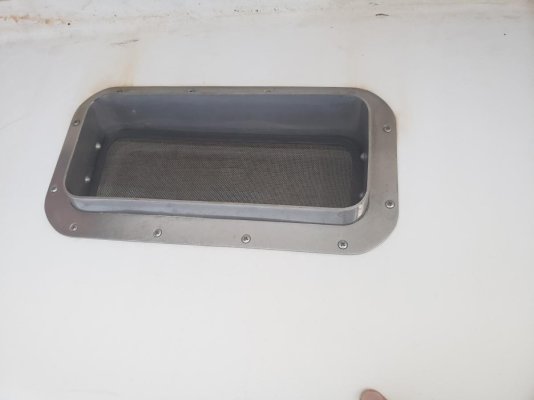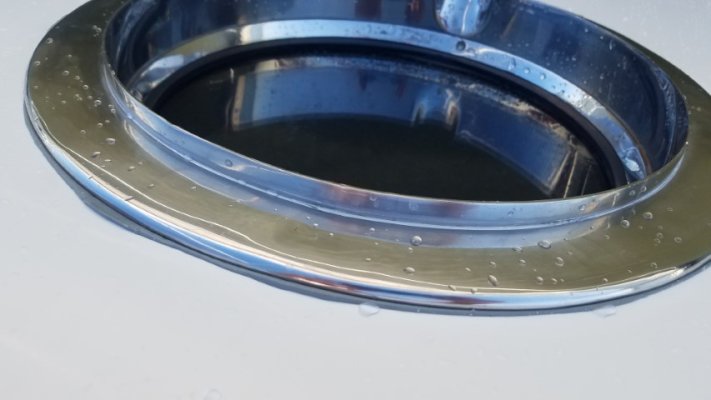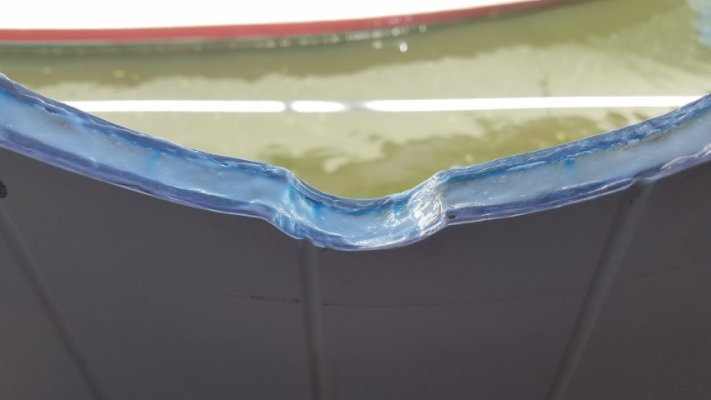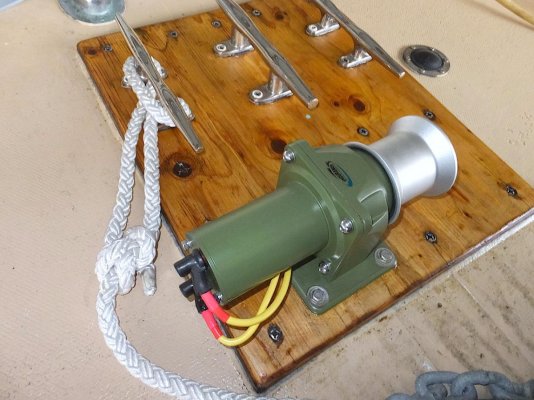You are using an out of date browser. It may not display this or other websites correctly.
You should upgrade or use an alternative browser.
You should upgrade or use an alternative browser.
Porthole bedding?
- Thread starter ERTF
- Start date
The friendliest place on the web for anyone who enjoys boating.
If you have answers, please help by responding to the unanswered posts.
If you have answers, please help by responding to the unanswered posts.
Perfect application for butyl. Compass Marine has an excellent butyl tape... and they are not all the same.
See
https://marinehowto.com/installing-newfound-metals-portlights/
https://marinehowto.com/bed-it-tape/
See
https://marinehowto.com/installing-newfound-metals-portlights/
https://marinehowto.com/bed-it-tape/
kwmeyer13
Senior Member
- Joined
- Oct 30, 2014
- Messages
- 260
- Location
- USA
- Vessel Name
- Guns 'N' Hoses II
- Vessel Make
- 2004 34' Pilothouse Sedan
I am no expert on sealants but I agree with Bacchus. I use butyl tape whenever possible. I will also second Compass Marine for the articles and the quality of the butyl tape.
Nomad Willy
Guru
I’ve always used Sika-Flex.
Bedding compound 291
Bedding compound 291
boathealer
Guru
Just did all of mine. After hours of wrestling to get the previous "bedding" off - it's butyl for me.
Make sure you allow for squeeze out (photo below) for a day or two before fully tightening down and trimming off the excess.
While they are out, it's a good opportunity to epoxy-seal the inner bulkhead/core to make it fully water-tight. (photo)
Make sure you allow for squeeze out (photo below) for a day or two before fully tightening down and trimming off the excess.
While they are out, it's a good opportunity to epoxy-seal the inner bulkhead/core to make it fully water-tight. (photo)
Attachments
FF
Guru
- Joined
- Oct 12, 2007
- Messages
- 22,552
All items with bedding need to be redone on a PM basis.
"After hours of wrestling to get the previous "bedding" off - it's butyl for me."
Agree the hard part is cleaning the old compound off .
We use Dolphinite , an ancient product that works well, and fits any size flange or base.
Scraped off easily with a chisel , wipes clean with most any solvent , and you are ready to reinstall. A bit of compound on the bolts or screws is easy to do.
A half hour job should not take a half a day, avoid 5200.
"After hours of wrestling to get the previous "bedding" off - it's butyl for me."
Agree the hard part is cleaning the old compound off .
We use Dolphinite , an ancient product that works well, and fits any size flange or base.
Scraped off easily with a chisel , wipes clean with most any solvent , and you are ready to reinstall. A bit of compound on the bolts or screws is easy to do.
A half hour job should not take a half a day, avoid 5200.
Last edited:
Leatherneck
Senior Member
- Joined
- Sep 10, 2019
- Messages
- 213
- Location
- USA
- Vessel Name
- Devil Dog
- Vessel Make
- 1987 Jefferson 42 Sundeck
Just did all of mine. After hours of wrestling to get the previous "bedding" off - it's butyl for me.
Make sure you allow for squeeze out (photo below) for a day or two before fully tightening down and trimming off the excess.
While they are out, it's a good opportunity to epoxy-seal the inner bulkhead/core to make it fully water-tight. (photo)
I just finished repairing/replacing some interior teak panels in my galley and dining area where the old portlights had leaked and damaged it. I'm getting ready to install the new portlights and noticed that there are voids in some areas of the bulkhead/core. I'm planning to use epoxy to fill them but I've never worked with epoxy. Any recommendations as which type/brand of epoxy to use? I am using butyl tape to bed the portlights.
boathealer
Guru
I just finished repairing/replacing some interior teak panels in my galley and dining area where the old portlights had leaked and damaged it. I'm getting ready to install the new portlights and noticed that there are voids in some areas of the bulkhead/core. I'm planning to use epoxy to fill them but I've never worked with epoxy. Any recommendations as which type/brand of epoxy to use? I am using butyl tape to bed the portlights.
1) Make sure its bone dry
2) Dig out any rotten material the best you can
3) Make sure its bone dry
4) The brand/type of epoxy is not too critical, as it is not going to be structural
5) Wet area to be filled with plain epoxy to soak/coat the wood well
5) Then mix with filler to a peanut butter consistency and lather in
Watch a lot of YouTube videos for some tips. Look up using a zip lock bag with corner clipped to squirt epoxy in deep areas.
Have fun!
All items with bedding need to be redone on a PM basis.
"After hours of wrestling to get the previous "bedding" off - it's butyl for me."
Agree the hard part is cleaning the old compound off .
We use Dolphinite , an ancient product that works well, and fits any size flange or base.
Scraped off easily with a chisel , wipes clean with most any solvent , and you are ready to reinstall. A bit of compound on the bolts or screws is easy to do.
A half hour job should not take a half a day, avoid 5200.
Basic human nature. Difficult maintenance becomes deferred maintenance.
Nomad Willy
Guru
All items with bedding need to be redone on a PM basis.
"After hours of wrestling to get the previous "bedding" off - it's butyl for me."
Agree the hard part is cleaning the old compound off .
We use Dolphinite , an ancient product that works well, and fits any size flange or base.
Scraped off easily with a chisel , wipes clean with most any solvent , and you are ready to reinstall. A bit of compound on the bolts or screws is easy to do.
A half hour job should not take a half a day, avoid 5200.
FF we use Dolphinite too but the fact that it remains goey for a long time put’s us off. We made and installed a large deck plate for the foredeck 7/8ths thick for anchor capstan and cleats. Bedded it all w Dolphinite after seeing that the Sampson post we removed had been there since 1974 and was still doing it’s job. But for a year or two goey Dolphinite dripped from under the deck onto ourselves and the berths.
But after the Dolphinite stopped oozing out we’re glad we used Dolphinite.
Pic is of the "backing plate" on top of the foredeck. The black runs is oil and long gone.
Attachments
Last edited:
Comodave
Moderator Emeritus
- Joined
- Jul 2, 2015
- Messages
- 21,297
- Location
- Au Gres, MI
- Vessel Name
- Black Dog
- Vessel Make
- Formula 41PC
We replaced 11 portholes a couple or years ago. Butyl is the only way to go unless it is a plastic port. Use butyl and use clamps to draw the port to the boat, don’t use the screws to draw the porthole tight. It will take a couple of days to draw up. Tighten the clamps for about 3 days and then use the screws or bolts to finish it.
FF
Guru
- Joined
- Oct 12, 2007
- Messages
- 22,552
"FF we use Dolphinite too but the fact that it remains goey for a long time put’s us off."
Its only gooey if its put way to thick.
Screw or bolt it in place and scrape off any squeeze out and, usually, put it back in the can.
It does not need to be squeezed down 3 or 4 times.
Its only gooey if its put way to thick.
Screw or bolt it in place and scrape off any squeeze out and, usually, put it back in the can.
It does not need to be squeezed down 3 or 4 times.
Nomad Willy
Guru
Yup I squeezed that deck plate down for 3-4 months.
Been fine for 12-14 years now.
Around the edges on the deck I only had to scrape up 2-3 times.
The problem was goo emerging around the edges of the fender washers up on the overhead. It eventually dripped itself out. Was good that it’s kinda thick.
Been fine for 12-14 years now.
Around the edges on the deck I only had to scrape up 2-3 times.
The problem was goo emerging around the edges of the fender washers up on the overhead. It eventually dripped itself out. Was good that it’s kinda thick.
FF
Guru
- Joined
- Oct 12, 2007
- Messages
- 22,552
"Was good that it’s kinda thick."
Thick mostly helps if the mounting area is not very stiff .
Thick mostly helps if the mounting area is not very stiff .
C lectric
Guru
I agree that butyl rubber tape is a good material for sealing the port lights.
DO NOT use a glue or adhesive. When, not if, it lets go you will have a dickens of a time getting the port free of the hull. It will only take a small leak to make you reseal it but the adhesive will be an absolute B+++a+d to get free.
I had to use my Rockwell oscillating tool to cut the stuff and did some damage to the cabin sidewall. Not serious but enough. With the non adhesive stuff I had used many years before I had been able to use an Olfa knife to cut it enough to release.
My ports are plastic, older Vetus glass reinforce nylon which do not appear to be available any longer. THey are TOUGH units although getting a bit long in the tooth looking, but TOUGH.
When resealing them with the butyl tape I used C clamps, pieces of whatever scrap I hade to act as pressure pads to spread the load and very carefully squeezed the tape untill I could see some all around the trim ring. Then I finished with the securing screws and trimmed away the squeeze out.
I did NOT use the tape full width but rather cut into strips which were then laid along the edges of the trim ring and the spigot of the port. I just ensured there was a tiny overlap of the strips ends so no gaps.
DO NOT use a glue or adhesive. When, not if, it lets go you will have a dickens of a time getting the port free of the hull. It will only take a small leak to make you reseal it but the adhesive will be an absolute B+++a+d to get free.
I had to use my Rockwell oscillating tool to cut the stuff and did some damage to the cabin sidewall. Not serious but enough. With the non adhesive stuff I had used many years before I had been able to use an Olfa knife to cut it enough to release.
My ports are plastic, older Vetus glass reinforce nylon which do not appear to be available any longer. THey are TOUGH units although getting a bit long in the tooth looking, but TOUGH.
When resealing them with the butyl tape I used C clamps, pieces of whatever scrap I hade to act as pressure pads to spread the load and very carefully squeezed the tape untill I could see some all around the trim ring. Then I finished with the securing screws and trimmed away the squeeze out.
I did NOT use the tape full width but rather cut into strips which were then laid along the edges of the trim ring and the spigot of the port. I just ensured there was a tiny overlap of the strips ends so no gaps.
Similar threads
- Replies
- 10
- Views
- 1K




